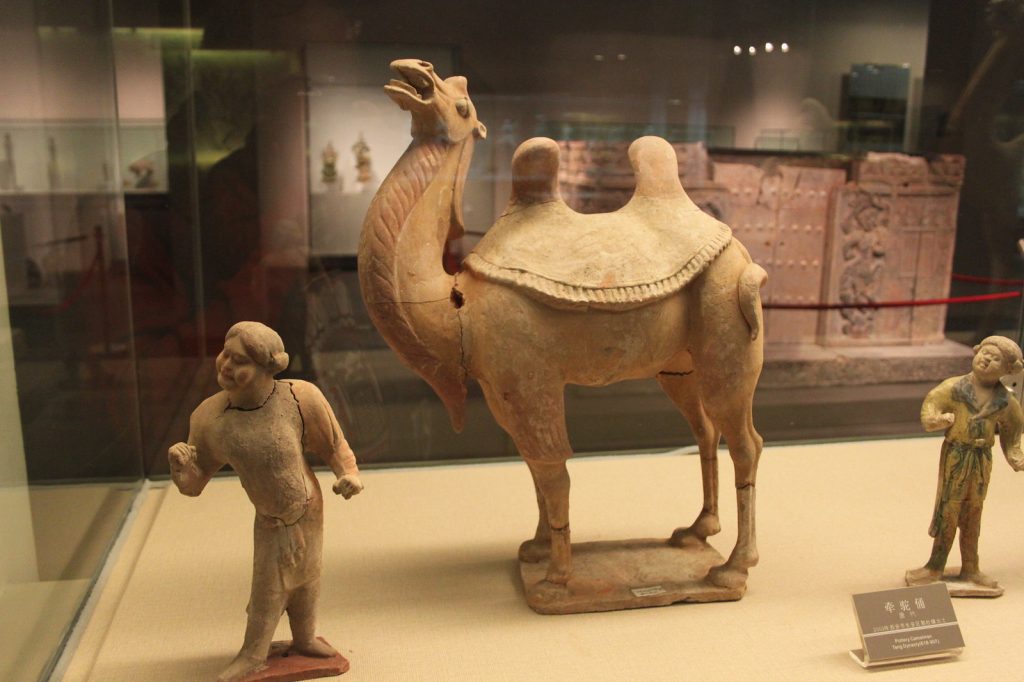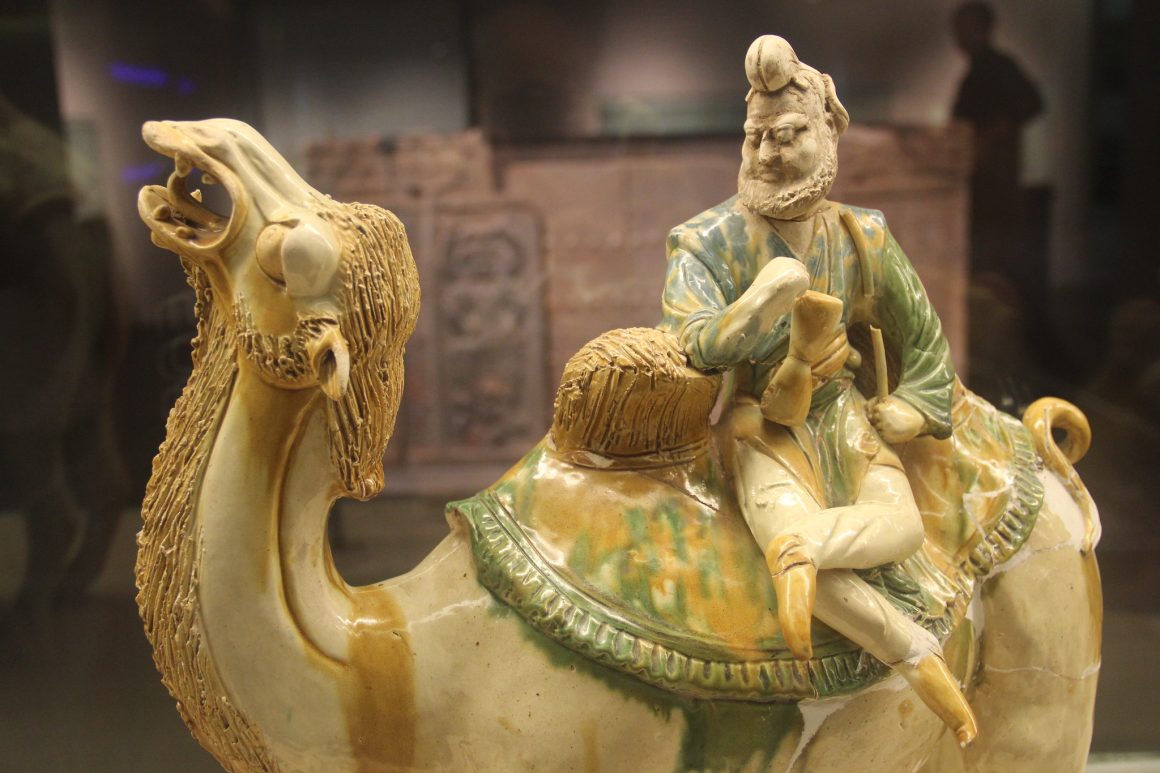The Sogdians, an ancient Central Asian people, played a pivotal role in the trade and cultural exchange along the Silk Road between China and the West. Their strategic location and expertise in long-distance trade made them influential intermediaries between the East and the West. Here are some key aspects of the Sogdians’ role on the Silk Road:
- Trade Network and Caravan Operations:
The Sogdians were renowned traders who established a vast network of trade routes connecting China with the Western regions, including Central Asia, Persia (modern-day Iran), and the Byzantine Empire. They operated caravans that transported a wide range of goods, including silk, spices, precious metals, gems, textiles, and exotic products.

- Commercial Hubs and Settlements:
Sogdians established thriving commercial hubs and settlements along the Silk Road, serving as crucial trading posts and centers of cultural exchange. Cities such as Samarkand, Bukhara, and Khujand became bustling cosmopolitan centers where goods, ideas, and technologies from East and West merged. - Middlemen and Cultural Brokers:
The Sogdians acted as intermediaries, bridging the linguistic and cultural gaps between the Chinese, Persian, Indian, and Central Asian traders. Their knowledge of multiple languages, including Chinese and various Central Asian dialects, enabled them to facilitate communication and negotiation between different cultures. - Banking and Financial Services:
Sogdians played a significant role in providing banking and financial services along the Silk Road. They facilitated money transfers, exchanged currencies, and provided letters of credit, enabling secure and efficient trade transactions over long distances. Their expertise in finance and accounting contributed to the smooth functioning of commercial activities. - Transmission of Ideas and Cultural Exchange:
Beyond trade, the Sogdians facilitated the exchange of ideas, knowledge, and religions along the Silk Road. They played a crucial role in the transmission of Buddhism from India to China, translating sacred texts and establishing Buddhist communities along the route. Sogdian art, architecture, and cultural practices also influenced and blended with the cultures they encountered. - Diplomatic Relations:
The Sogdians served as diplomatic envoys and interpreters, facilitating political and diplomatic interactions between different empires and kingdoms. Their cultural and linguistic versatility made them valuable mediators in negotiations and peace treaties.
The Sogdians’ expertise in long-distance trade, their establishment of trade networks and settlements, their cultural mediation, and their role as intermediaries between East and West made them instrumental in facilitating the exchange of goods, ideas, and technologies along the Silk Road. They were key figures in shaping the economic, cultural, and social dynamics of this ancient trade route.

